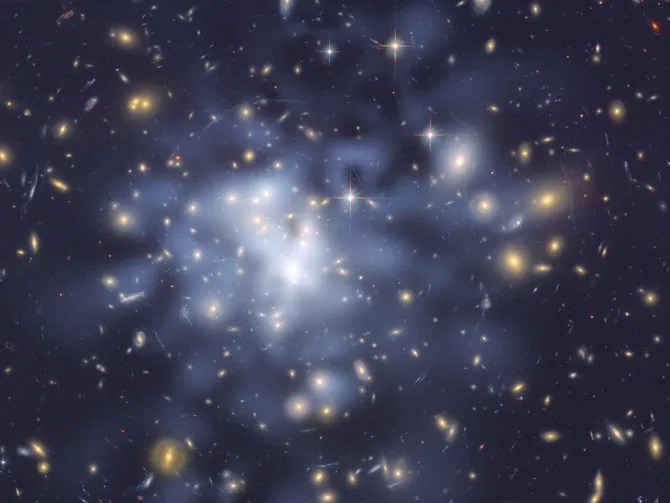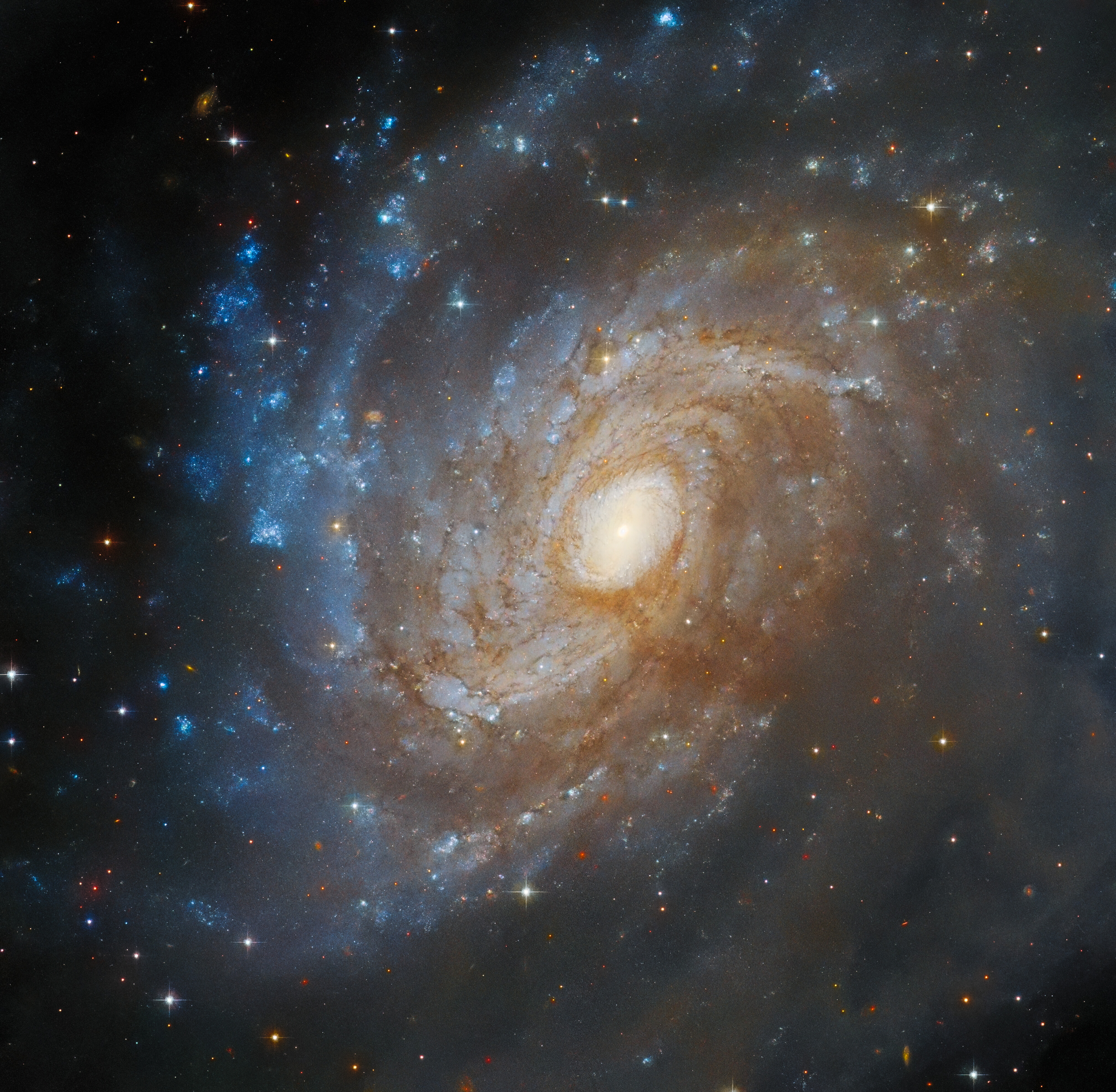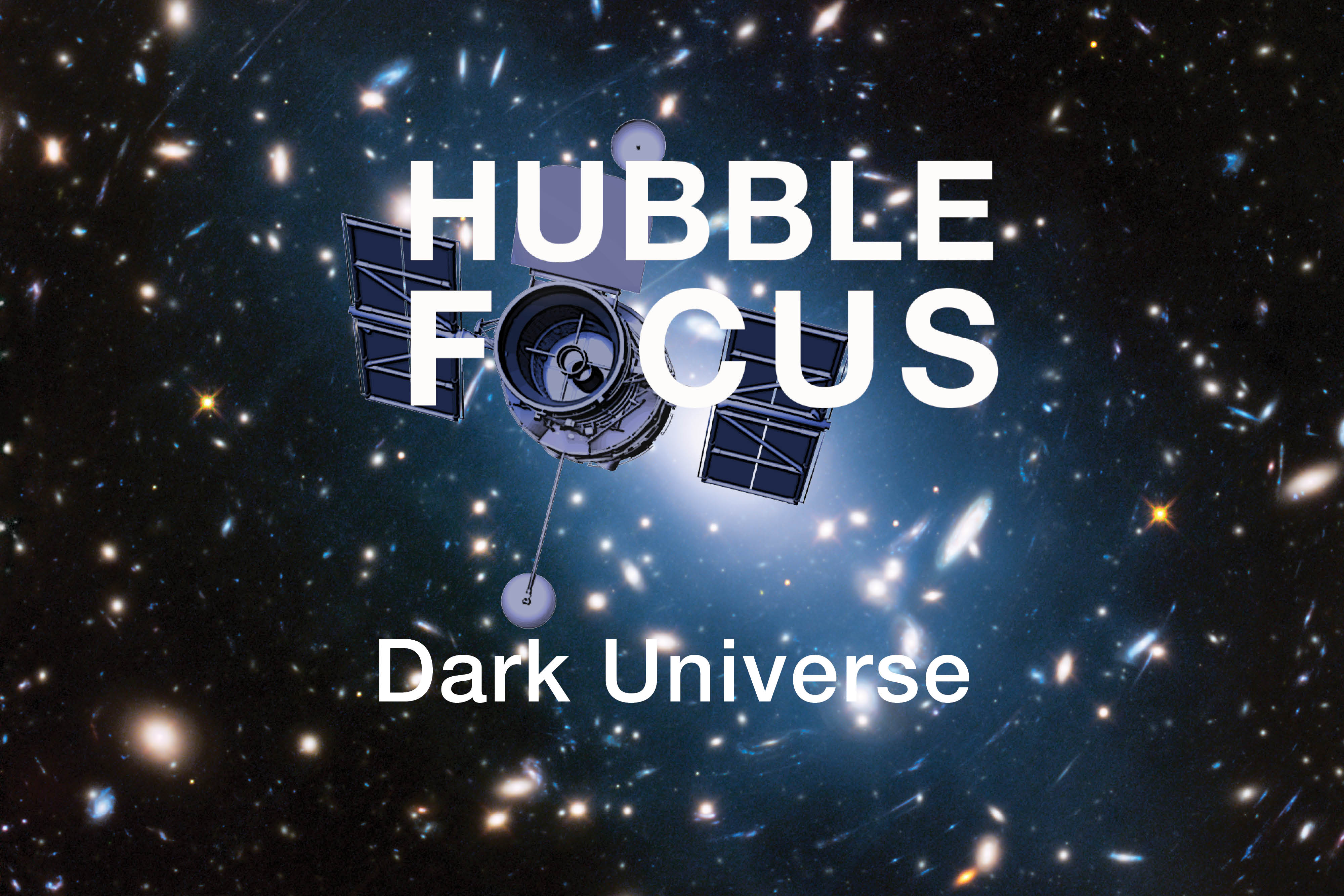4 min read
Credit: NASA, ESA, and D. Coe (NASA JPL/Caltech and STScI)
Astronomers using NASA's Hubble Space Telescope took advantage of agiant cosmic magnifying glass to create one of the sharpest and mostdetailed maps of dark matter in the universe. Dark matter is aninvisible and unknown substance that makes up the bulk of theuniverse's mass.
The new dark matter observations may yield new insights into the roleof dark energy in the universe's early formative years. The resultsuggests that galaxy clusters may have formed earlier than expected,before the push of dark energy inhibited their growth. A mysteriousproperty of space, dark energy fights against the gravitational pull ofdark matter. Dark energy pushes galaxies apart from one another bystretching the space between them, thereby suppressing the formation ofgiant structures called galaxy clusters. One way astronomers can probethis primeval tug-of-war is through mapping the distribution of darkmatter in clusters.
A team led by Dan Coe at NASA's Jet Propulsion Laboratory in Pasadena,Calif., used Hubble's Advanced Camera for Surveys to chart theinvisible matter in the massive galaxy cluster Abell 1689, located 2.2billion light-years away. The cluster's gravity, the majority of whichcomes from dark matter, acts like a cosmic magnifying glass, bendingand amplifying the light from distant galaxies behind it. This effect,called gravitational lensing, produces multiple, warped, and greatlymagnified images of those galaxies, like the view in a funhouse mirror.By studying the distorted images, astronomers estimated the amount ofdark matter within the cluster. If the cluster's gravity only came fromthe visible galaxies, the lensing distortions would be much weaker.
Based on their higher-resolution mass map, Coe and his collaboratorsconfirm previous results showing that the core of Abell 1689 is muchdenser in dark matter than expected for a cluster of its size, basedon computer simulations of structure growth. Abell 1689 joins ahandful of other well-studied clusters found to have similarly densecores. The finding is surprising, because the push of dark energy earlyin the universe's history would have stunted the growth of all galaxyclusters.
"Galaxy clusters, therefore, would had to have started forming billionsof years earlier in order to build up to the numbers we see today," Coeexplains. "At earlier times, the universe was smaller and more denselypacked with dark matter. Abell 1689 appears to have been well fed atbirth by the dense matter surrounding it in the early universe. Thecluster has carried this bulk with it through its adult life to appearas we observe it today."
Mapping the Invisible
Abell 1689 is among the most powerful gravitational lensing clustersever observed. Coe's observations, combined with previous studies,yielded 135 multiple images of 42 background galaxies.
"The lensed images are like a big puzzle," Coe says. "Here we havefigured out, for the first time, a way to arrange the mass of Abell1689 such that it lenses all of these background galaxies to theirobserved positions." Coe used this information to produce ahigher-resolution map of the cluster's dark matter distribution thanwas possible before.
Coe teamed with mathematician Edward Fuselier, who, at the time, wasat the United States Military Academy at West Point, to devise a newtechnique to calculate the new map. "Thanks, in large part, to Eddie'scontributions, we have finally `cracked the code' of gravitationallensing. Other methods are based on making a series of guesses as towhat the mass map is, and then astronomers find the one that best fitsthe data. Using our method, we can obtain, directly from the data, amass map that gives a perfect fit."
Astronomers are planning to study more clusters to confirm thepossible influence of dark energy. A major Hubble program that willanalyze dark matter in gigantic galaxy clusters is the Cluster Lensingand Supernova survey with Hubble (CLASH). In this survey, thetelescope will study 25 clusters for a total of one month over thenext three years. The CLASH clusters were selected because of theirstrong X-ray emission, indicating they contain large quantities ofhot gas. This abundance means the clusters are extremely massive. Byobserving these clusters, astronomers will map the dark matterdistributions and look for more conclusive evidence of early clusterformation, and possibly early dark energy.
The Hubble Space Telescope is a project of international cooperationbetween NASA and the European Space Agency. NASA's Goddard SpaceFlight Center manages the telescope. The Space Telescope ScienceInstitute (STScI) conducts Hubble science operations. STScI is operatedfor NASA by the Association of Universities for Research in Astronomy,Inc., in Washington, D.C.
RELEASE: STScI-PR10-37








